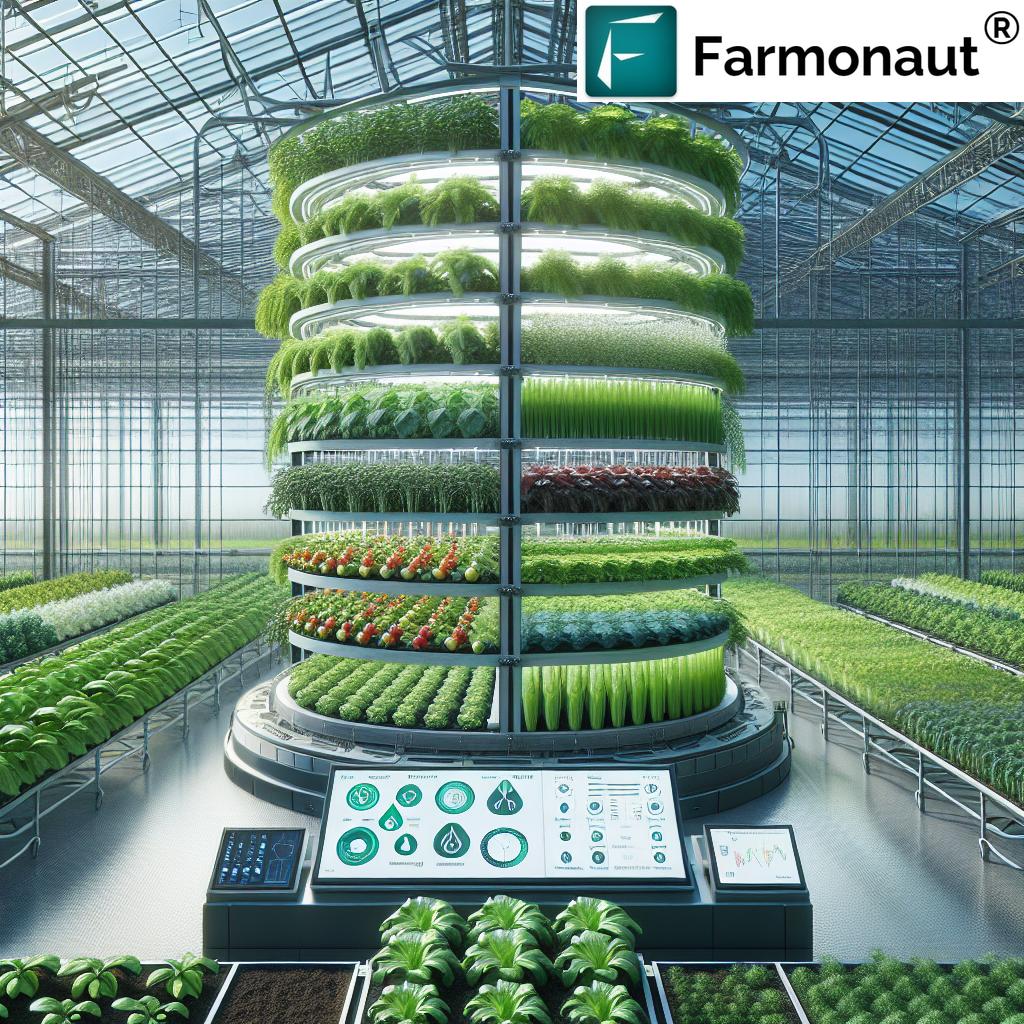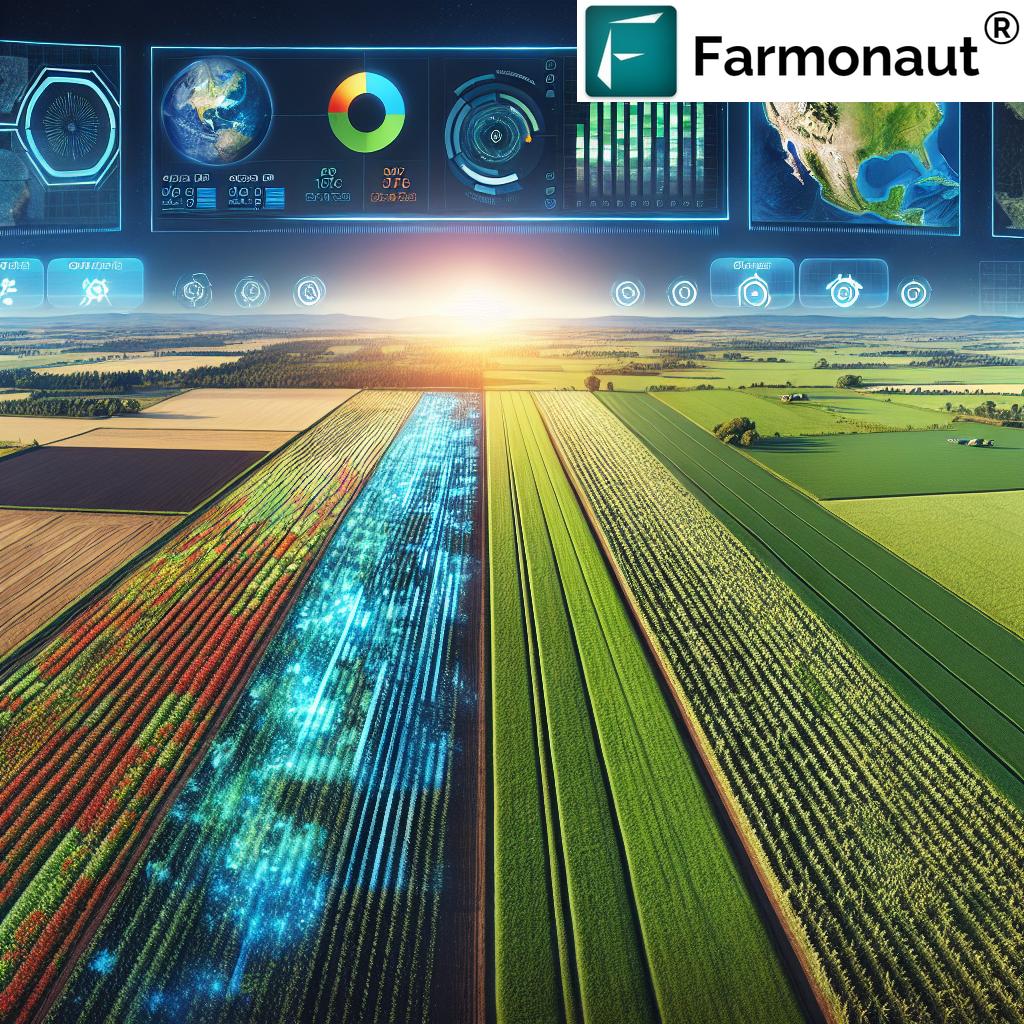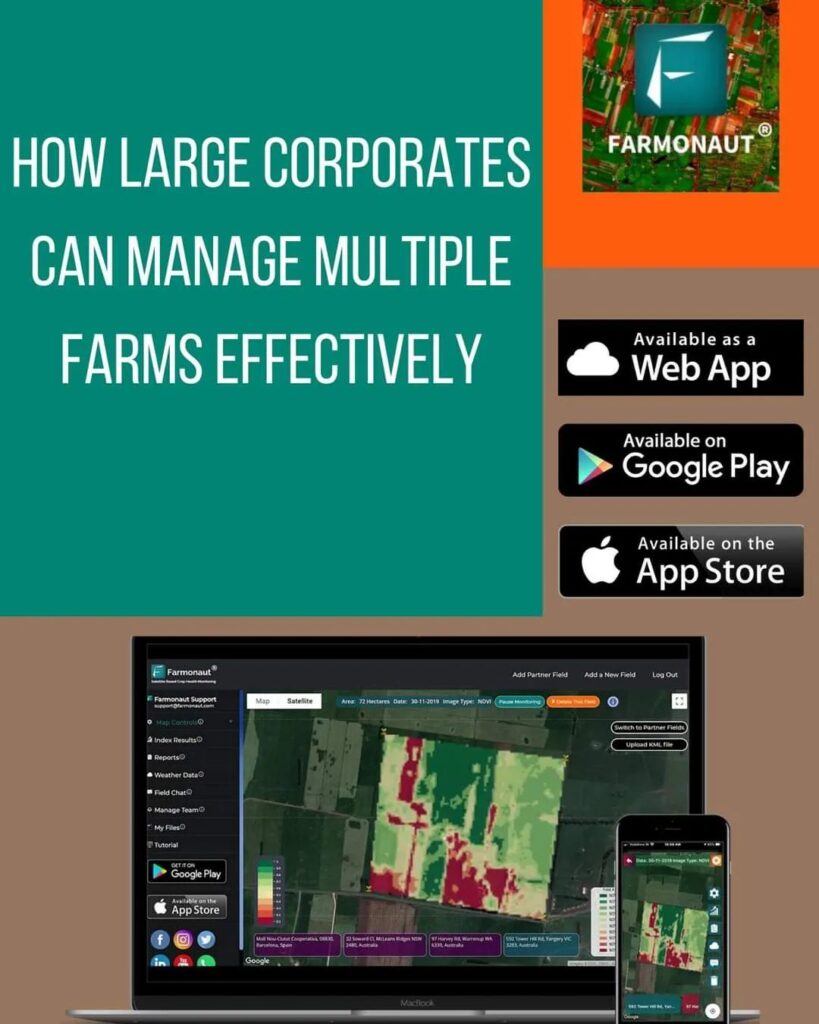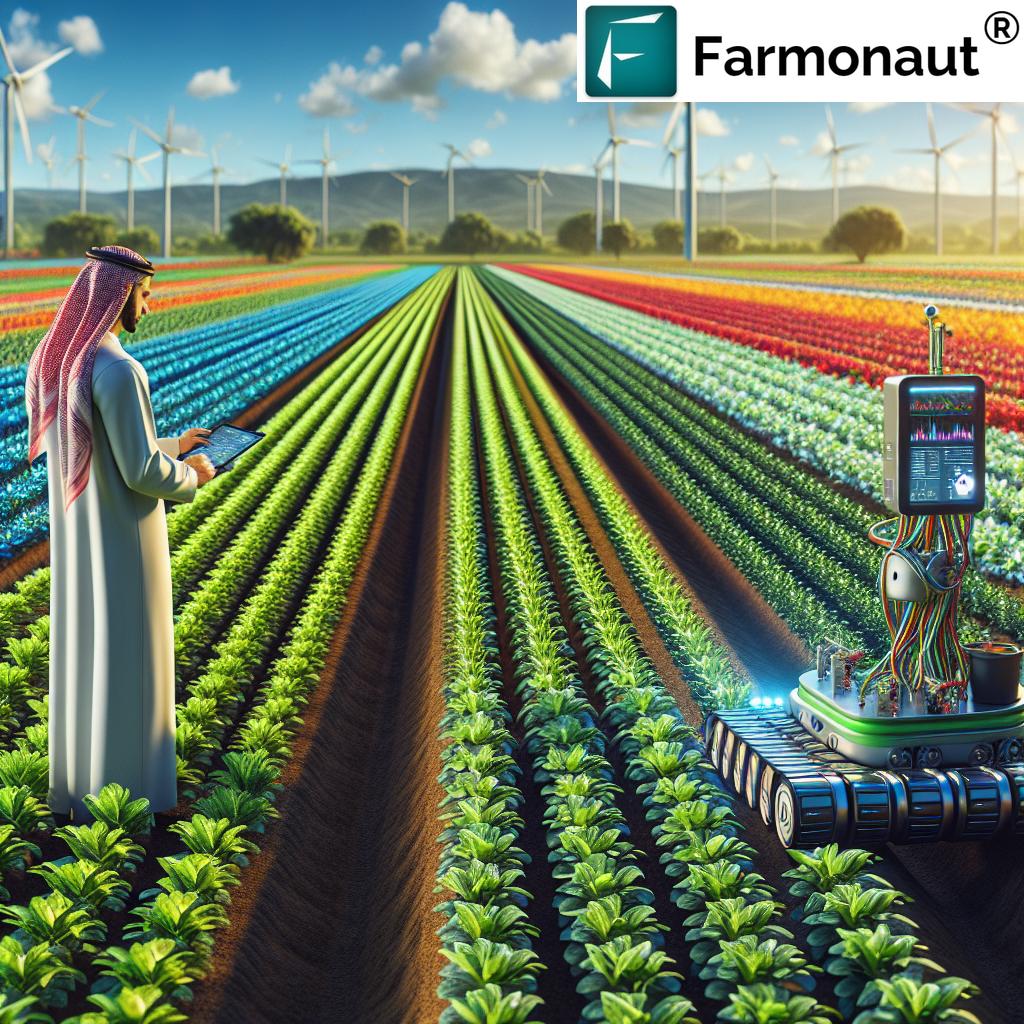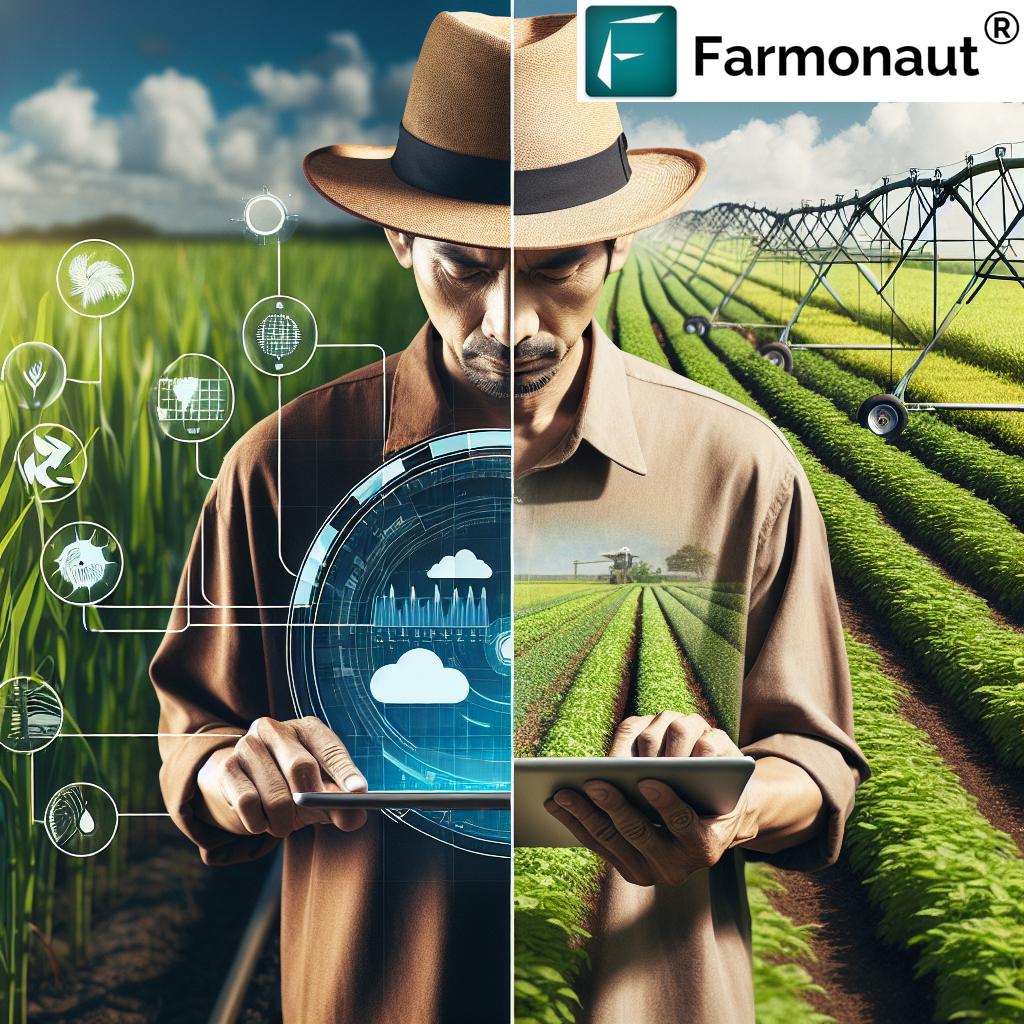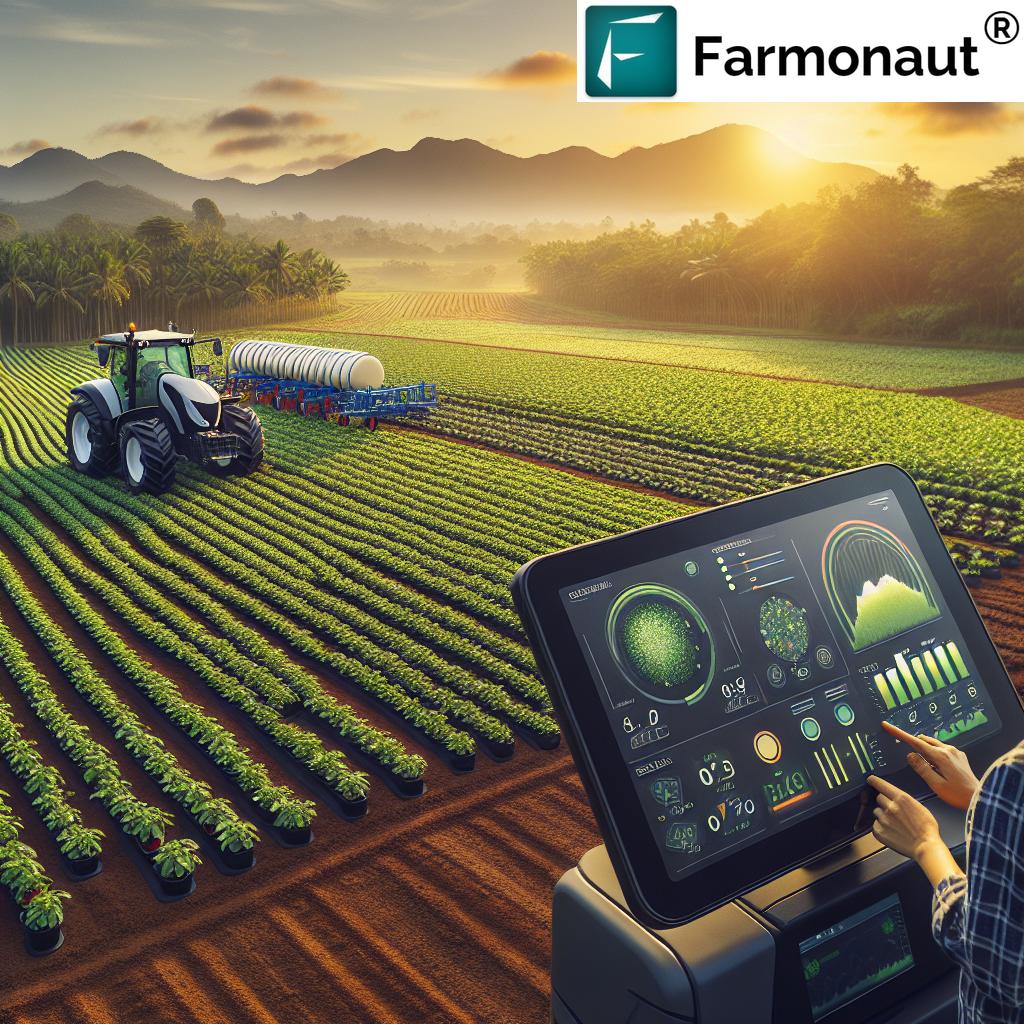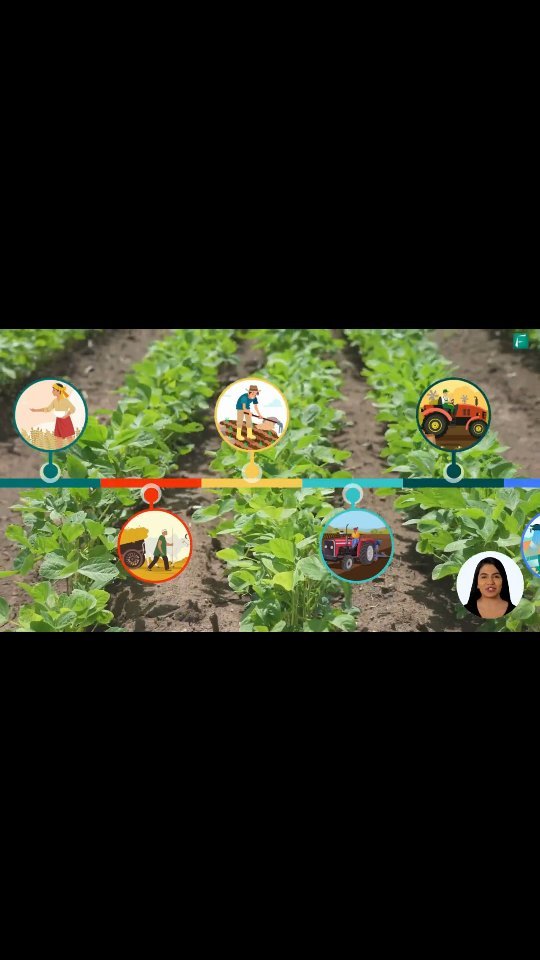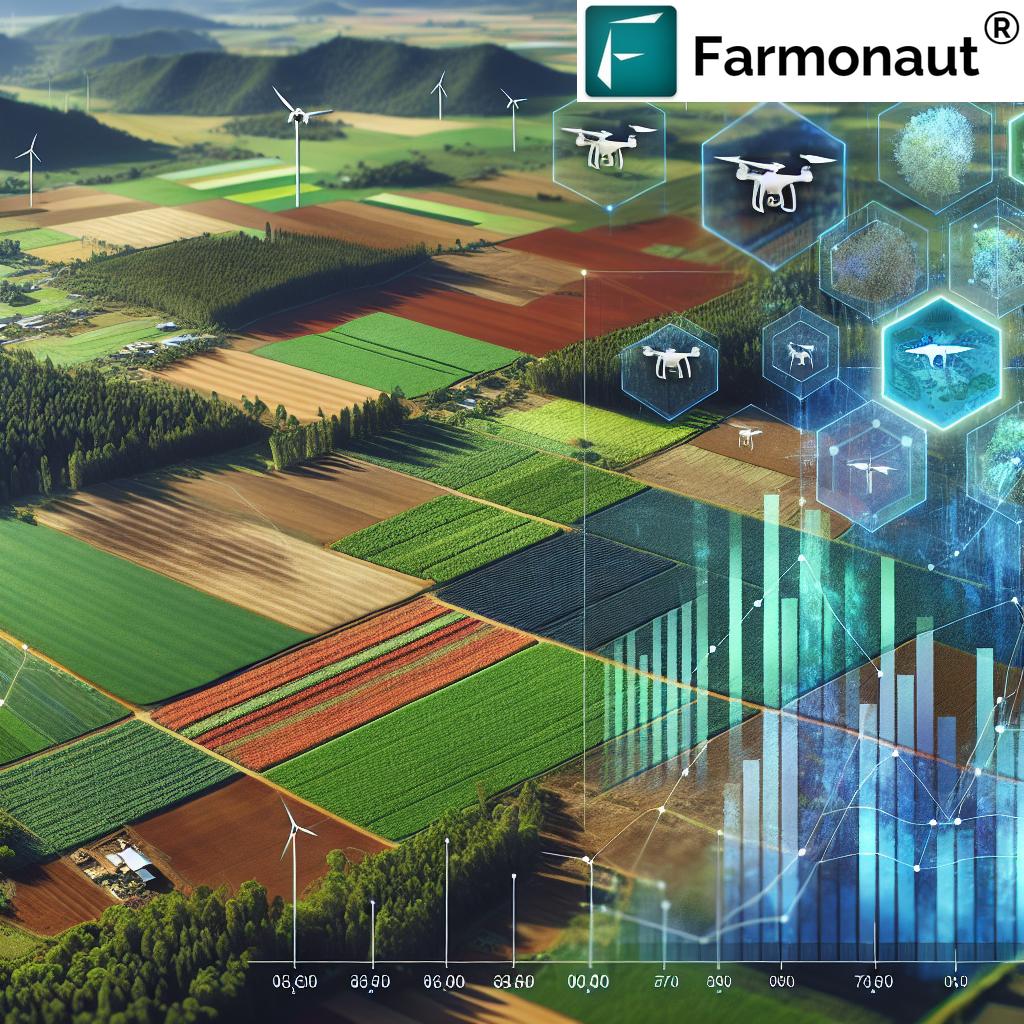Cutting-Edge Green Tech: 7 Top Sustainable Innovations
In today’s world, agriculture, farming, and forestry face unprecedented challenges—climate change, resource scarcity, a need for increased productivity, and ever-higher standards for sustainability. As global populations rise, our food systems must evolve using advanced technologies to optimize resource use, enhance resilience, and reduce environmental impact.
We are witnessing a green revolution driven by cutting-edge technologies such as precision agriculture, sustainable farming practices, agrivoltaics in agriculture, automated pest detection, advanced biotechnology, drones, and vertical farming systems. These powerful innovations are leading us toward a future where environmental stewardship, economic growth, and global food security work hand in hand.
Below, we dive deep into the top 7 sustainable innovations that are reshaping modern agriculture and forestry.
“Precision agriculture can reduce fertilizer use by up to 30%, significantly lowering environmental impact in sustainable farming.”
1. Precision Agriculture Technologies: Optimizing Yields & Sustainability
Precision agriculture technologies have emerged as a game-changer—enabling us to make data-driven decisions that maximize yields and minimize environmental impact. By integrating advanced sensors, satellite data, IoT devices, machine learning, and artificial intelligence, these technologies allow farmers to optimize resource use and enhance efficiency in every agricultural operation.
- Site-Specific Management: Tools such as Farmonaut’s satellite-based crop monitoring provide detailed maps indicating crop health, enabling targeted interventions for fertilizers, irrigation, and pesticides.
- Variable Rate Technology (VRT): Modern tractors and implements adjust inputs like pesticides and fertilizers based on field data, reducing waste and cost.
- Autonomous Machinery: At the Consumer Electronics Show (CES), companies showcased autonomous tractors capable of efficiently applying fertilizers and pesticides, thereby reducing chemical usage and labor costs.
- AI-Driven Crop Health Analysis: With platforms like Farmonaut’s Jeevn AI advisory system, farmers can receive real-time, field-specific insights for tackling changing soil, crop, and climate conditions.
By deploying precision agriculture, we increase productivity, minimize inputs, and enable truly sustainable farming practices. This optimizes yields, reduces costs, and supports environmental sustainability.
How does Farmonaut help?
Farmonaut leverages multispectral satellite imagery, AI, and machine learning to deliver accurate, timely data on vegetation health, soil moisture, and more. This supports site-specific irrigation, fertilizer application, and pest management—making precision ag affordable and scalable.
- Cost-effective precision agriculture, putting advanced tools in every farmer’s hands.
- Actionable, real-time crop insights—no expensive hardware required.
- Satellite-based monitoring empowers both smallholders and large agribusinesses.
Explore how Farmonaut APIs (API portal; read the API developer docs) allow seamless integration into third-party agri systems, bringing satellite, weather, and crop analytics to the wider agri-tech ecosystem.
For large-scale operations and cooperatives, Farmonaut’s Agricultural Admin App simplifies centralized management with built-in analytics, resource allocation, and fleet monitoring.
2. Agrivoltaics in Agriculture: The Dual Power of Food & Solar Energy
Agrivoltaics is transforming how we use land—combining solar panels and agricultural crops on the same field to reap dual benefits: renewable energy generation and robust food production. By strategically placing solar panels over farmland, we not only boost total output but also create microclimates that benefit certain crops and optimize water use.
- Maximizing Land Productivity: With agrivoltaics, we can achieve up to 60% higher land productivity, as energy and crops are produced side by side.
- Water Conservation: Solar shade reduces soil evaporation, cutting irrigation needs and protecting delicate crops from extreme temperatures.
- Climate Resilience: The panels shelter plants from weather fluctuations and enhance system resilience.
- Livestock Integration: Panels can be installed high enough to allow grazing, further maximizing land utilization.
However, proper design and planning remain essential—ensuring enough light reaches the crops beneath. Over 500 sites across the United States alone have already implemented this approach, contributing 9 GW of solar capacity to the national grid.
“Agrivoltaics can increase land productivity by 60%, combining solar energy generation with crop cultivation on the same field.”
3. Automated Pest Detection: AI & Machine Learning for Targeted Control
Pest and disease outbreaks are a major threat to both yields and the environment. Thanks to advancements in artificial intelligence and machine learning, automated pest detection systems are now revolutionizing how we manage crop health.
- Real-Time Monitoring: AI-powered devices constantly scan crops for signs of disease or pest presence, enabling timely intervention.
- Machine Learning Algorithms: Sophisticated models analyze imagery and sensor data to identify specific pests and recommend responses.
- Reduced Chemical Use: By targeting only affected areas, we significantly reduce pesticide use and minimize impact on beneficial insects and biodiversity.
- Economic Benefits: Early, targeted action means less crop loss and lower input costs.
Farmonaut adds scalability with satellite-based monitoring—delivering block-level pest and disease advisories and minimizing false alarms by leveraging both AI prediction and remote sensing.
- AI-based pest and disease detection informs timely, precise interventions.
- Integrated with Farmonaut’s satellite-powered crop loan and insurance verification, protecting farmers’ livelihoods and supporting agricultural sustainability.
4. Agroforestry Benefits: Integrating Trees for Multifunctional Landscapes
Agroforestry incorporates trees and shrubs into agricultural settings, unlocking a suite of environmental, economic, and social benefits that promote long-term sustainability and resilience.
- Biodiversity & Pollinator Support: Introducing plant diversity enhances habitats for insects and wildlife that protect and pollinate crops.
- Soil Health & Carbon Sequestration: Deep-rooted perennials stabilize soil and store carbon, while reducing erosion and improving structure.
- Climate Change Mitigation: Increased tree cover absorbs atmospheric carbon, contributing to climate-smart agriculture.
- Diversified Livelihoods: Tree products—fruit, nuts, timber—provide extra income and food security.
With Farmonaut’s carbon footprinting solution (learn more here), agribusinesses can easily track and reduce greenhouse gas emissions from both agroforestry and other farming operations.
Agroforestry’s success hinges on rotating crops and trees, careful design, and ongoing management—helping sequester maximum carbon and boost resilience.
5. Biotechnology in Crop Production: Enhancing Food Security & Reducing Inputs
Modern biotechnology and genetic engineering have advanced crop improvement—yielding varieties that resist pests, diseases, and climate stressors, while also improving nutritional value and resource efficiency.
- Disease & Pest Resistance: Engineered crops need fewer chemical inputs, directly reducing environmental impact.
- Drought & Heat Tolerance: Traits bred for resilience allow crops to thrive under harsh conditions and climate change.
- Enhanced Nutrition: Genetic engineering can boost essential nutrients in staple crops, supporting community food security.
- Yield Stability: By maintaining productivity under variable conditions, biotechnology supports year-round food production.
Combined with precision agriculture and data-driven management tools like those from Farmonaut, biotech-enriched fields can reach new heights of efficiency, resilience, and sustainability.
Explore the Farmonaut blockchain traceability system for ensuring authenticity and sustainability of biotechnology-enhanced crops in the food supply chain.
6. Drones for Crop Monitoring: Remote Sensing, Mapping, & Smart Interventions
The rise of drones and remote sensing technologies is giving us unprecedented access to real-time, field-level information on crop health, soil conditions, and environmental stressors.
- High-Resolution Monitoring: Drones capture images and data across large or difficult-to-access fields.
- Resource Optimization: Analysis informs targeted irrigation, fertilization, and pest management—saving water and chemicals and minimizing waste.
- Quick Damage Assessment: Spot issues like pest infestations, disease, or drought before they jeopardize yields.
- Reduced Labor & Costs: Automation means faster, more accurate monitoring compared to manual scouting.
Combined with satellite-based remote sensing from Farmonaut, drone data can be layered to provide a total field health view, guiding interventions and boosting farm productivity.
Farmonaut also streamlines vehicle, fleet, and equipment tracking (see Fleet Management tool) for optimized agricultural logistics, reducing costs and emissions.
7. Vertical Farming Systems: Growing Upwards for Urban Food Security
Vertical farming revolutionizes urban agriculture, producing crops in stacked layers within controlled indoor environments—making food production independent of season, climate, and arable land availability.
- Water Savings: Recirculating hydroponic systems use up to 95% less water than conventional fields.
- No Pesticide Use: Enclosed environments shield crops from pests and diseases.
- Year-Round Fresh Food: Grow leafy greens, herbs, and vegetables near city centers, minimizing transportation costs and emissions.
- Reduced Land Use: Stacking production increases output without expanding agricultural land or impacting forests.
The integration of precision agriculture, climate-smart controls, and advanced lighting/irrigation systems makes vertical farming a versatile tool in our sustainable toolkit.
Comparison Table of Sustainable Agricultural Innovations
| Innovation Name | Technology Type | Estimated Yield Improvement (%) | Environmental Impact | Resilience Enhancement | Adoption Level |
|---|---|---|---|---|---|
| Precision Agriculture | Digital, Data-Driven | 10-25% | ↓ Fertilizer, ↓ Water, ↓ Pesticide | Improved | Widespread |
| Agrivoltaics | Solar Integration | 40-60% | ☆ Solar Energy, ↓ Water Use | High (heat/drought buffer) | Pilot / Scaling |
| Automated Pest Detection | AI & Machine Learning | 10-21% | ↓↓ Pesticide, Preserves Insects | Early Response | Growing |
| Agroforestry | Integrated Land Use | 8-20% | ↑ Biodiversity, ↑ Carbon Sequestration | Climate Mitigation | Expanding |
| Biotechnology | Genetic Engineering | 15-22% | ↓ Chemical Inputs, ↑ Nutrition | Disease & Drought Tolerance | High in Select Crops |
| Drones & Remote Sensing | Aerial/Satellite | 7-18% | ↓ Resource Use, Early Detection | Rapid Issue Response | Widespread in Tech-Driven Regions |
| Vertical Farming | Controlled Environment | 30-40% (land-equivalent) | ↓↓ Water Use, ↓ Emissions | Urban Food Security | Pilot / Urban Centers |
Farmonaut Solutions: Integrating Green Innovations in Agriculture
By connecting satellite technology, AI, and blockchain, Farmonaut empowers us to bring precision agriculture and sustainable farming to real-world operations—at scale, and with unmatched affordability.
- Real-time Crop Health Monitoring: High-frequency satellite imagery (NDVI, soil moisture, disease stress) informs site-specific interventions.
- Jeevn AI Advisory System: Personalized recommendations based on crop, region, disease, and weather.
- Blockchain Traceability: Supply chain transparency for food and textile industries—see Farmonaut Traceability.
- Resource & Fleet Management: Advanced logistics support—see Farmonaut’s Fleet Management to manage equipment and logistics efficiently.
- Carbon Footprinting: Live analytics on emissions from all field activities—for regulatory, CSR, and sustainability goals. Learn about Farmonaut Carbon Footprinting here.
Ready to harness digital agriculture for your enterprise? Discover Farmonaut’s Crop Plantation, Forest Advisory, and Large-Scale Farm Management Apps designed for government, agribusiness, and NGOs.
Climate-Smart Agriculture: Technologies for Resilience
Climate variability, droughts, and extreme weather events require climate-smart agriculture to ensure stable food production and farm livelihoods. These innovations fuse traditional best practices with cutting-edge technologies.
- Drought-Resistant Varieties: Seeds bred for arid and semi-arid conditions ensure resilience against water scarcity.
- Automated Irrigation Systems: Soil and weather sensors trigger irrigation only when needed, reducing water waste.
- Climate Risk Forecasting: Digital platforms (including Farmonaut’s advisory) deliver weather and resource risk alerts to minimize losses.
- Integrated Pest Management (IPM): Combines monitoring, decision-support, and biological controls for sustainable, chemical-minimizing interventions.
As we integrate these solutions with robust digital tools, we cultivate systems that are dynamic, adaptive, and sustainable—essential for facing tomorrow’s challenges.
Sustainable Forestry Practices: Protecting Soil, Water, and Biodiversity
The forestry sector is embracing ecological innovation—implementing sustainable forestry practices such as selective logging, reforestation, agroforestry, and digital monitoring for smart, balanced management.
- Selective Logging & Reforestation: Ensures productive timber harvesting while rejuvenating forests and enhancing biodiversity.
- Agroforestry: Blending trees with crops and livestock for climate, soil, and productivity gains.
- Monitoring Biodiversity: Regular tracking of tree cover, greenhouse gas emissions, and wildlife is now supported by AI and satellite tools.
- Community Engagement: Sustainable forest management must balance environmental goals with the needs of local economies, people, and traditions.
These practices help maintain essential ecosystem services—water regulation, carbon sequestration, and habitat—that human life and agriculture depend on.
Challenges & Opportunities in Green Tech Adoption
While these innovations offer enormous potential, we acknowledge critical challenges that must be addressed for truly sustainable impact:
- Initial Investment Costs: Transitioning to advanced tech often requires significant upfront spending, especially for smallholder farmers.
- Technical Complexity: Training and support are essential for maximizing the benefits of digital systems, automated detection, or new biotechnology.
- Infrastructure and Connectivity: Reliable internet and power are vital for digital platforms and remote monitoring.
- Policy, Research, and Education: Effective government support, ongoing R&D, and farmer training help accelerate adoption and integration.
Despite these hurdles, the long-term benefits—higher yields, lower costs, enhanced resilience, and environmental stewardship—make investment in sustainable innovation essential. With platforms like Farmonaut, we move a step closer to affordable, accessible precision agriculture for all.
Conclusion: Advancing Sustainable Agriculture for Our Future
Our journey through cutting-edge green technologies underscores a powerful truth: Sustainable, resilient, and productive food systems are within reach when we embrace innovation, research, and digital transformation.
By uniting precision agriculture technologies, agrivoltaics in agriculture, automated pest detection, biotechnology, and vertical farming systems with robust digital tools, we optimize yields, support green innovation, and secure food for generations to come.
Farmonaut exemplifies this approach, making precision agriculture affordable and accessible for all sectors—the smallholder, large agribusiness, NGOs, and government—via satellite-driven, AI-powered insights, and digital management platforms. Sustainability is not just a goal; it is a collaborative mission—one we must all join to ensure both environmental health and food security.
For further reading, product information, or to get started, visit the Farmonaut App or explore the Farmonaut website.
FAQ: Green Tech in Agriculture
1. What is the primary goal of precision agriculture technologies?
Precision agriculture technologies aim to optimize resource use (such as water, fertilizers, and pesticides) by using advanced data analytics, sensors, and AI-driven insights. This leads to higher yields, reduced environment impact, and lower costs.
2. How does agrivoltaics improve both food and energy production?
Agrivoltaics in agriculture integrates solar panels with crop cultivation on the same land, enabling renewable energy generation while also producing food. This approach maximizes land productivity and supports climate resilience.
3. What is automated pest detection, and why is it essential?
Automated pest detection uses AI and machine learning to analyze crop images or data, identifying pest and disease outbreaks in real time. This reduces the need for chemical pesticide use, lowers input costs, and minimizes crop loss.
4. Can small farmers afford precision agriculture technologies?
Yes—modern providers like Farmonaut offer affordable, satellite-based solutions (even for smallholdings) via web and mobile apps, eliminating the need for expensive on-farm hardware.
5. What role do drones and remote sensing play in farming?
Drones for crop monitoring provide high-resolution imagery and environmental data, helping farmers detect problems early and manage inputs efficiently for sustainable crop production.
6. Why is vertical farming considered sustainable?
Vertical farming systems use recirculating water, no pesticides, and require less land. By producing food near urban centers, they cut transport emissions and boost local food security.
7. How do I get started with Farmonaut?
Begin by downloading the app or exploring the website. Integrate Farmonaut APIs into your agricultural operations for advanced satellite analytics and real-time crop monitoring.






